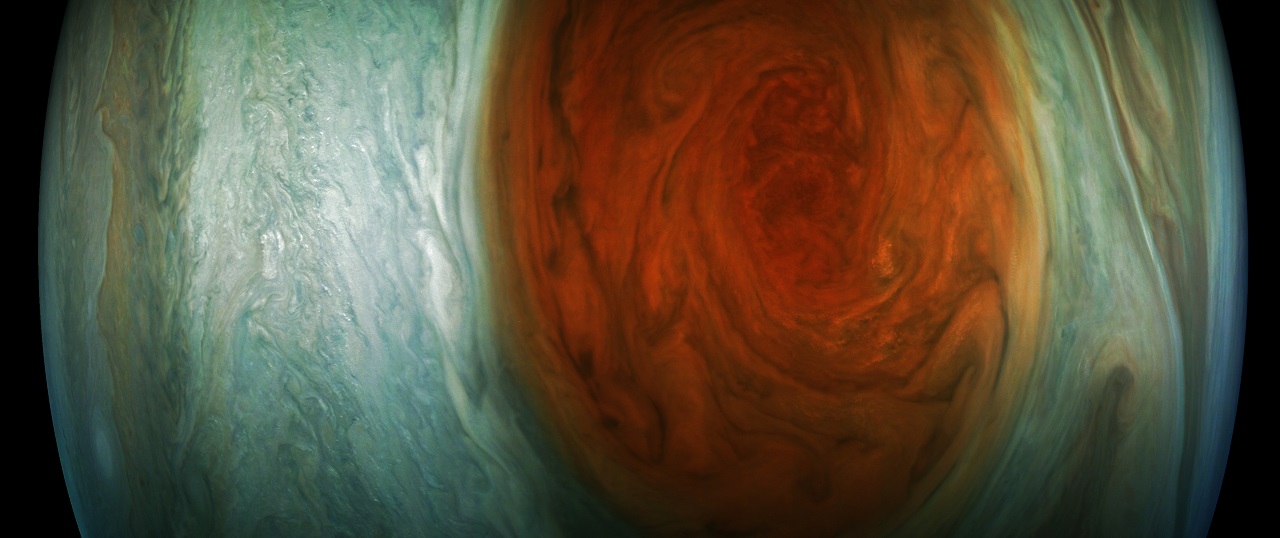Juno is on its last legs and will soon plunge straight into Jupiter, but before its ultimate destiny, it is continually providing us with new pictures of Jupiter’s famous red spot, which is a really a giant storm in Jupiter’s atmosphere.

Credits: NASA/JPL-Caltech/SwRI/MSSS/Gerald Eichstädt
We are getting more detailed images of the red spot than ever before, with Juno passing by closer and closer in its orbit around Jupiter, closer than any other spacecraft has ever gone before.
The pictures show an ever more detailed data of this gigantic storm, big enough to swallow the entire Earth. But its depth is unknown, this is something that the researchers now hope to find out by using measurements made by instruments at the same time as when the photos were taken.
This is the whole point with the space probe Juno, really, learn more about what the planet looks like inside and how it may have been formed.

The storm has been monitored since 1830 and has possibly existed for more than 350 years. In modern times, the Great Red Spot has appeared to be shrinking.
“These highly-anticipated images of Jupiter’s Great Red Spot are the ‘perfect storm’ of art and science. With data from Voyager, Galileo, New Horizons, Hubble and now Juno, we have a better understanding of the composition and evolution of this iconic feature,”
– Jim Green, NASA’s director of planetary science
Juno was launched on Aug. 5, 2011, from Cape Canaveral, Florida. During its mission of exploration, Juno soars low over the planet’s cloud tops — as close as about 2,100 miles (3,400 kilometers). During these flybys, Juno is probing beneath the obscuring cloud cover of Jupiter and studying its auroras to learn more about the planet’s origins, structure, atmosphere, and magnetosphere.
Reference:











![OpenAI. (2025). ChatGPT [Large language model]. https://chatgpt.com](https://www.illustratedcuriosity.com/files/media/55136/b1b0b614-5b72-486c-901d-ff244549d67a-350x260.webp)
![OpenAI. (2025). ChatGPT [Large language model]. https://chatgpt.com](https://www.illustratedcuriosity.com/files/media/55124/79bc18fa-f616-4951-856f-cc724ad5d497-350x260.webp)
![OpenAI. (2025). ChatGPT [Large language model]. https://chatgpt.com](https://www.illustratedcuriosity.com/files/media/55099/2638a982-b4de-4913-8a1c-1479df352bf3-350x260.webp)








